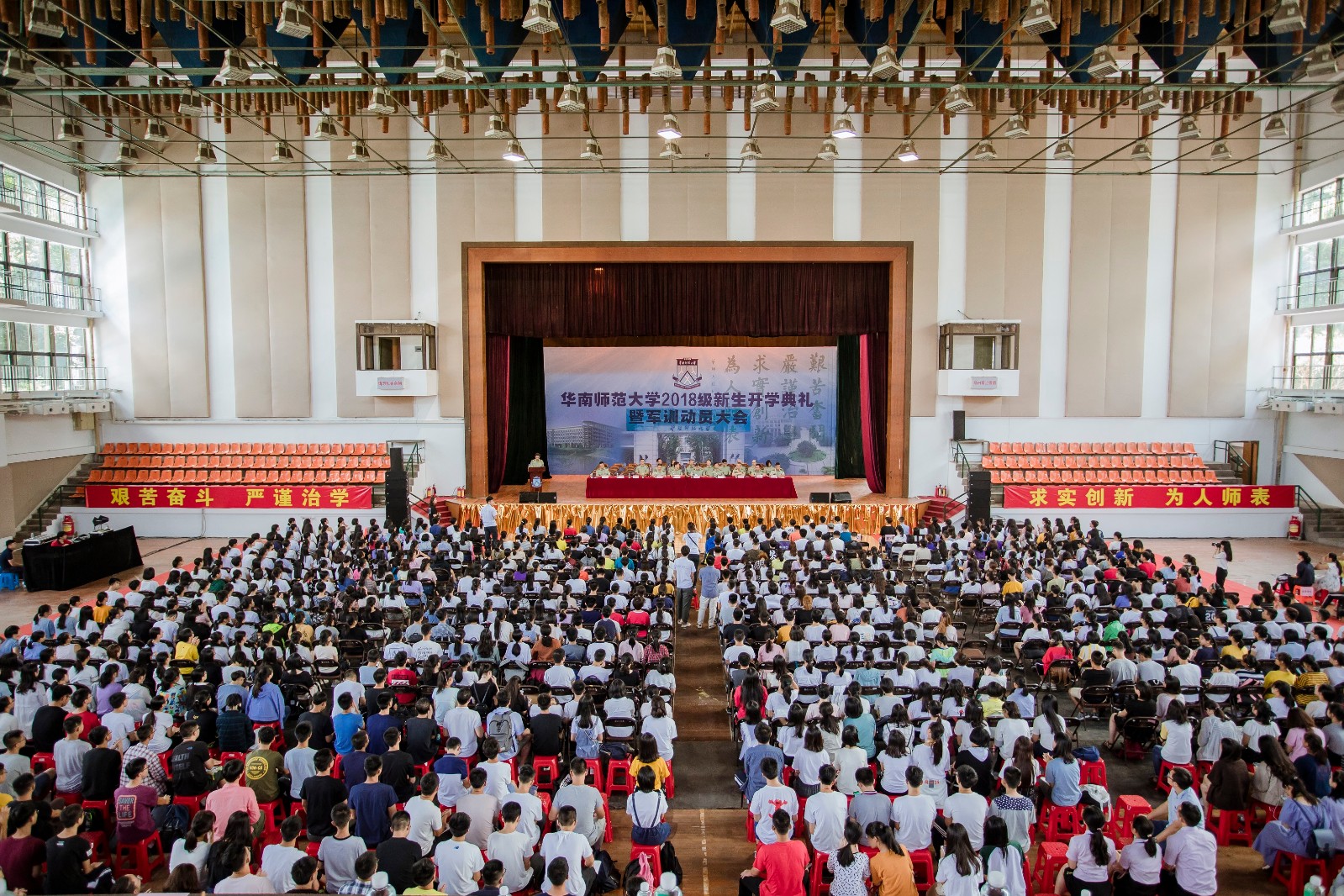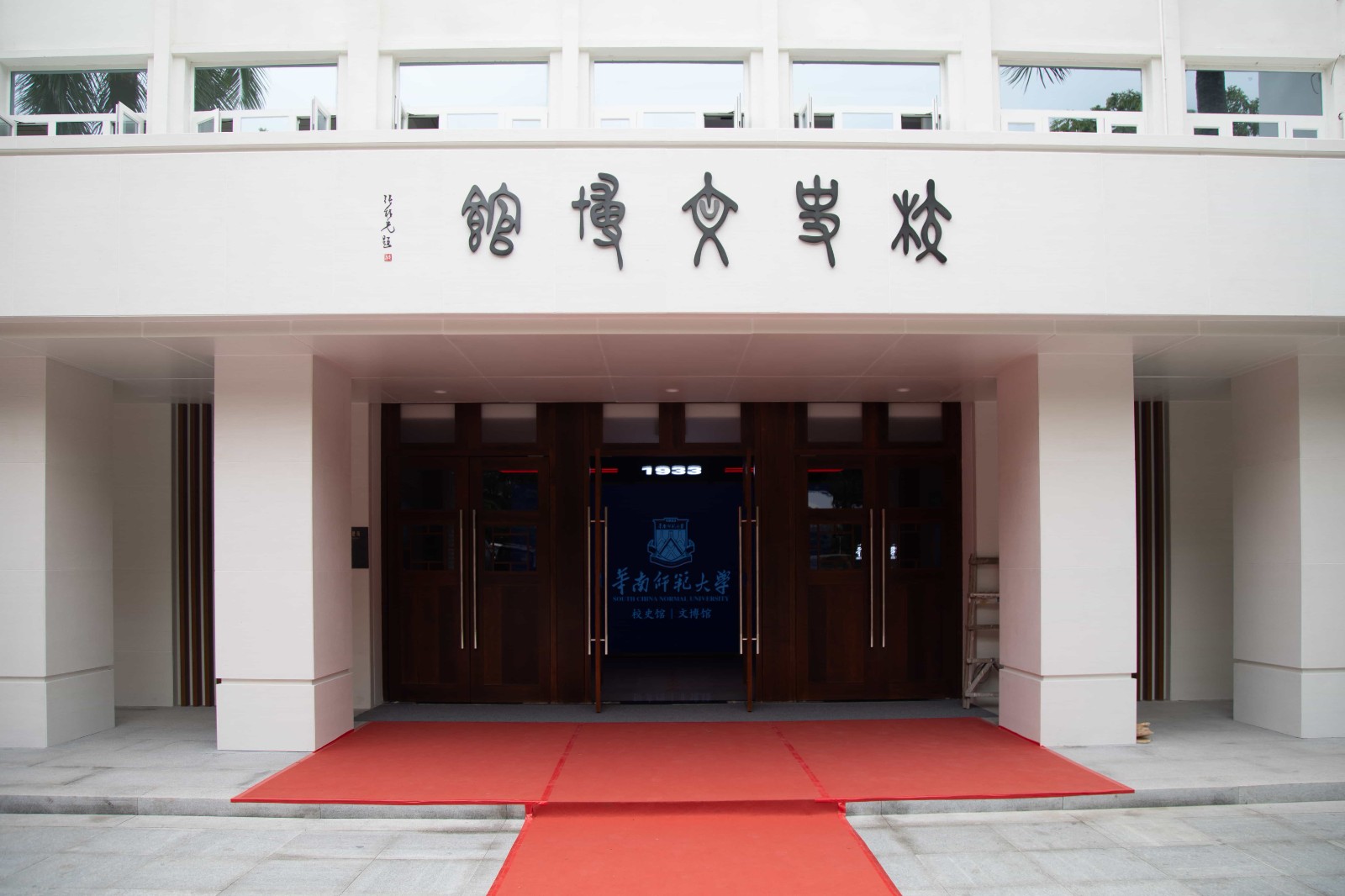
Likes
As a key construction project of the 90th anniversary, the school history museum is important in providing cultural guidance and reinforcing cultural identity and confidence.
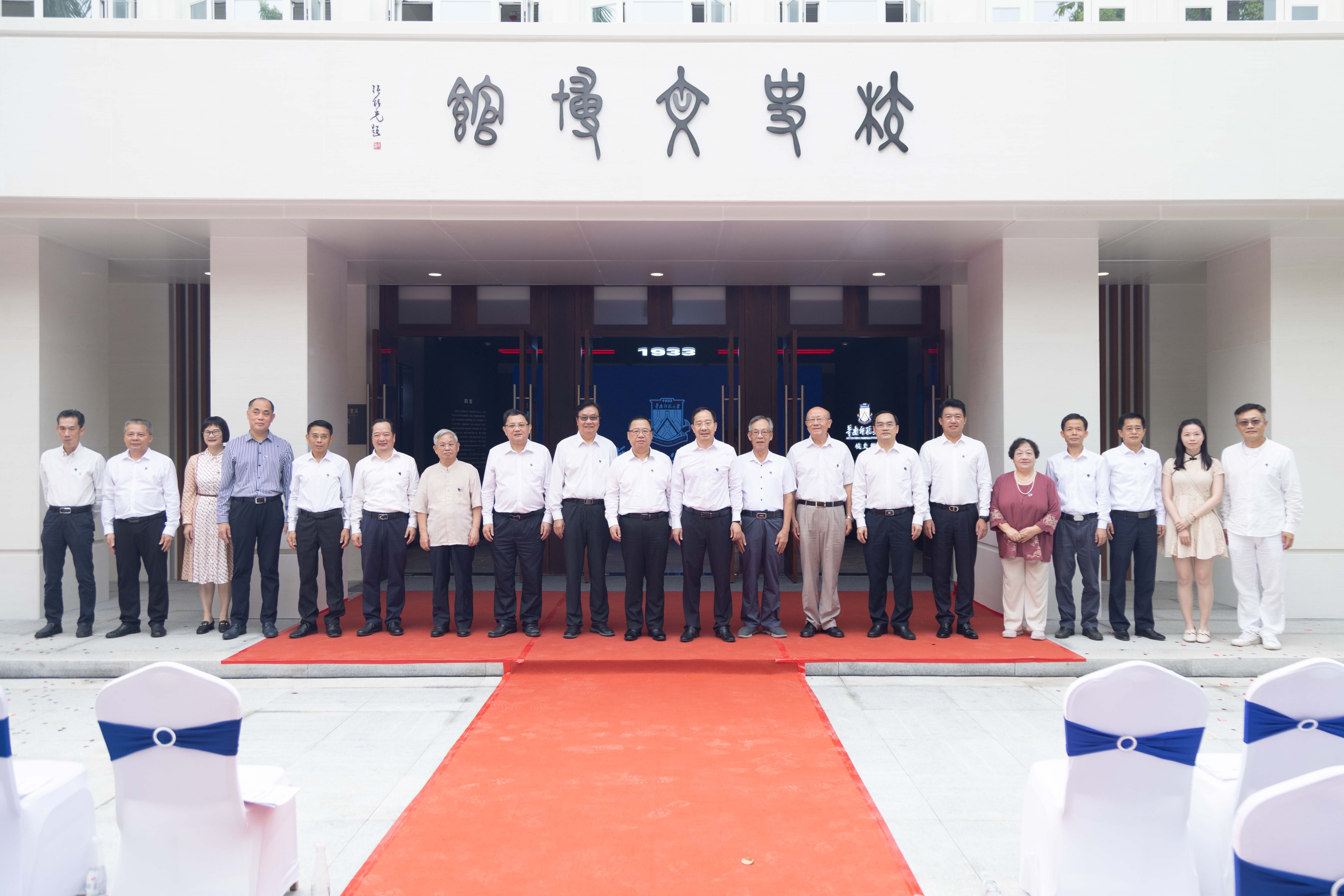
The opening ceremony of the school history museum was held on November 3.
Located at the Shipai campus, the museum building covers an area of 1,250 square meters, and it was constructed in 10 months time.

The sign of the museum is a Chinese bronze inscription.
The first floor of the building covers an area of about 750 square meters. The central staircase divides the school history hall into two parts: SCNU's history and achievements.
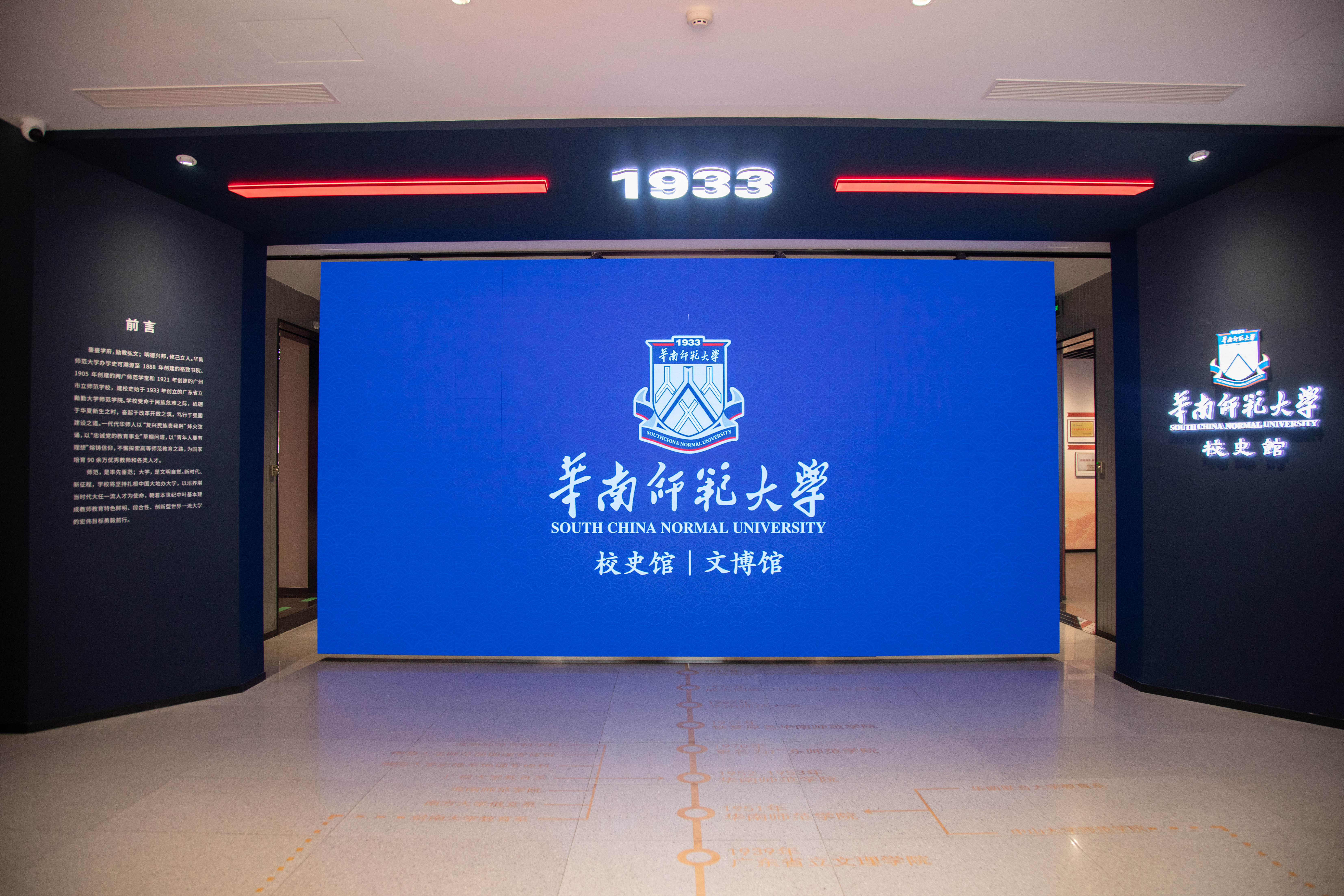
The big screen on the front side of the first floor shows the emblem of SCNU and the staircase is behind it.
The history of SCNU from 1933 to 2012 is displayed on the left. It can be divided into three phases: the beginning period of laying the foundation from August 1933 to October 1951; the struggling period of overcoming difficulties from October 1951 to October 1982; and the fast growth period of university development from October 1982 to December 2012. The exhibition chronologically showcases the school's history of walking through hardship and forging ahead.
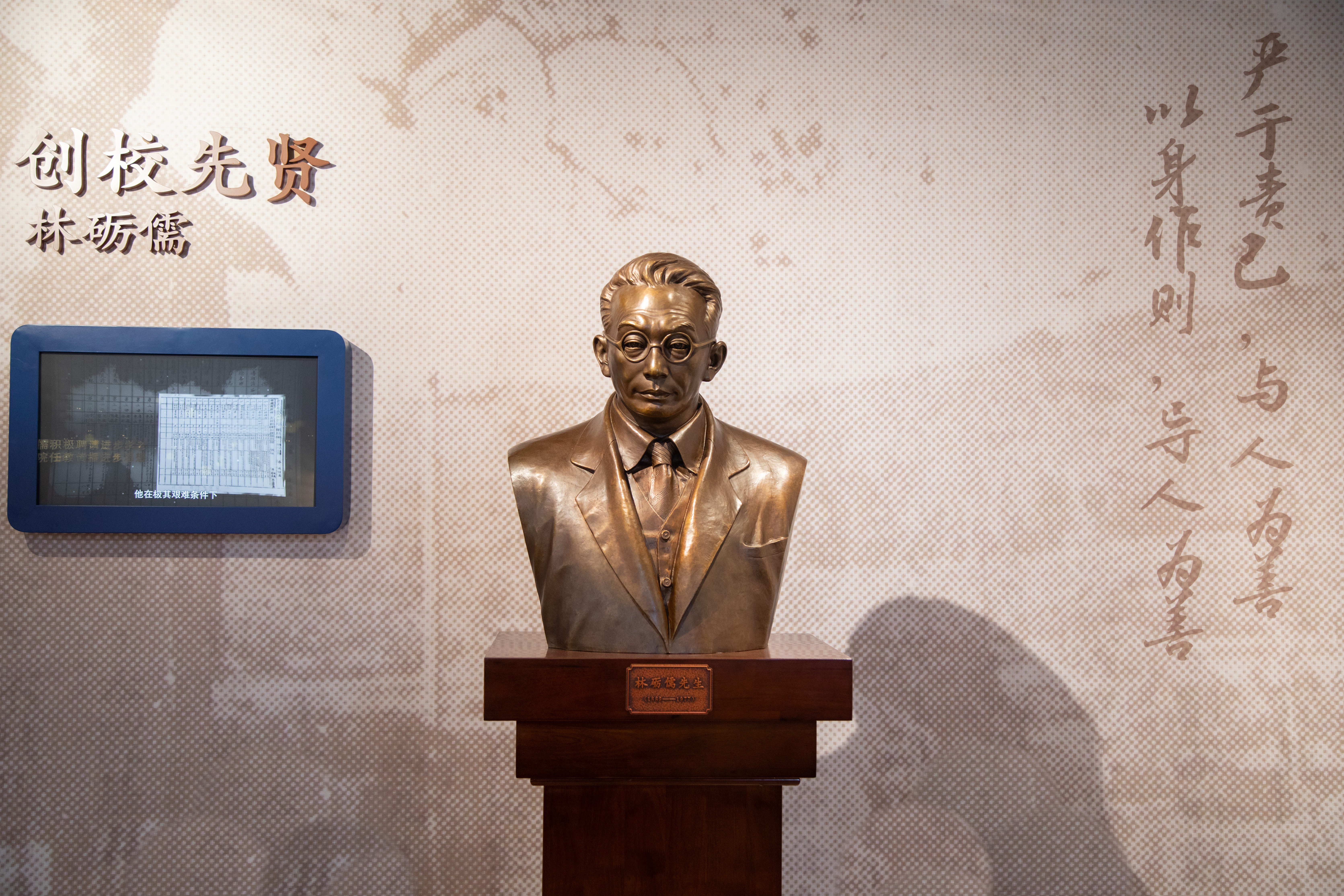
The bronze statue of Lin Liru, the founder of Guangdong Provincial Xiangqin Normal College in 1933, the precursor of South China Normal University.
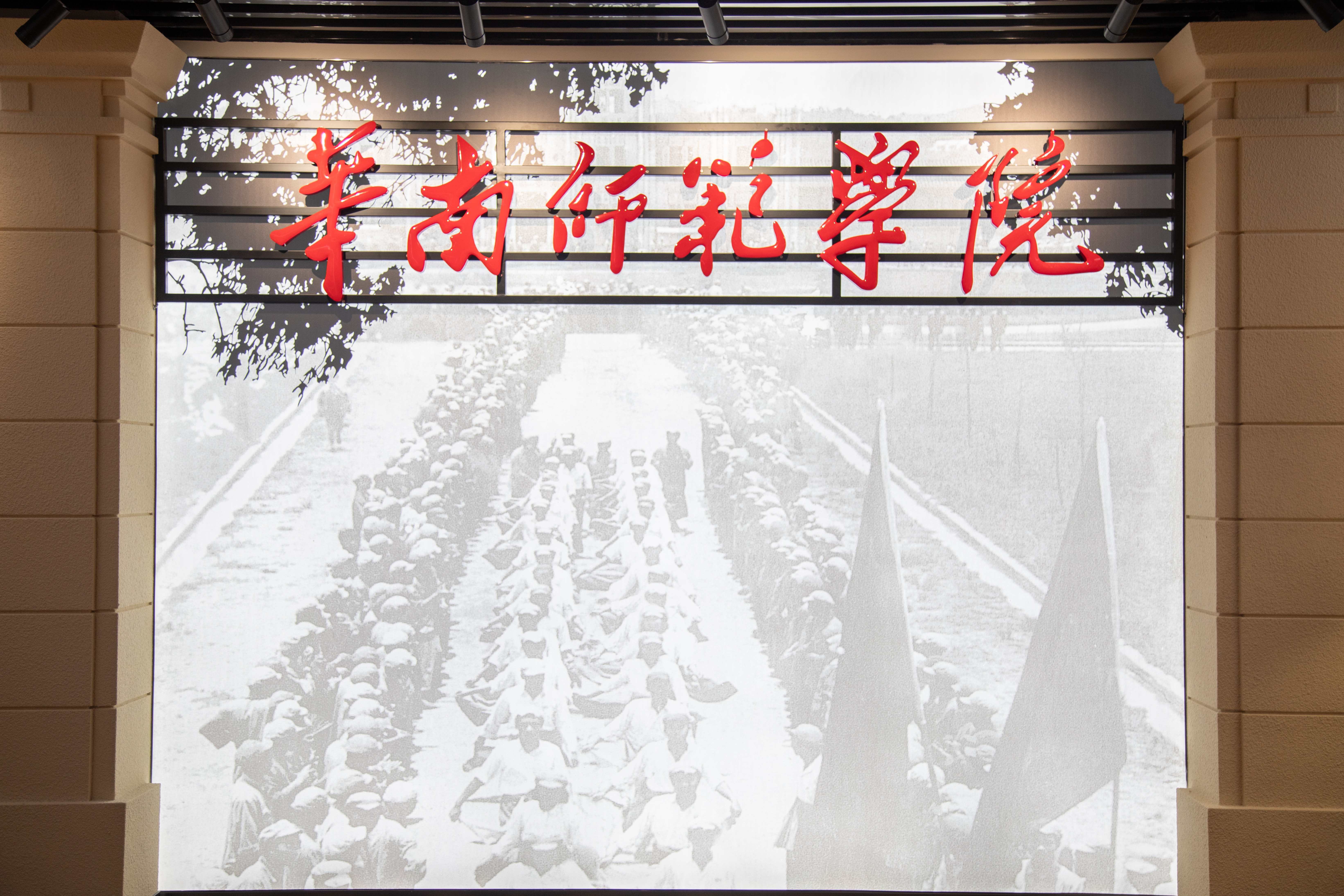
A replica of the school gate of South China Teachers College. The college came into being after the merging of other colleges dating back to the founding of the People's Republic of China.
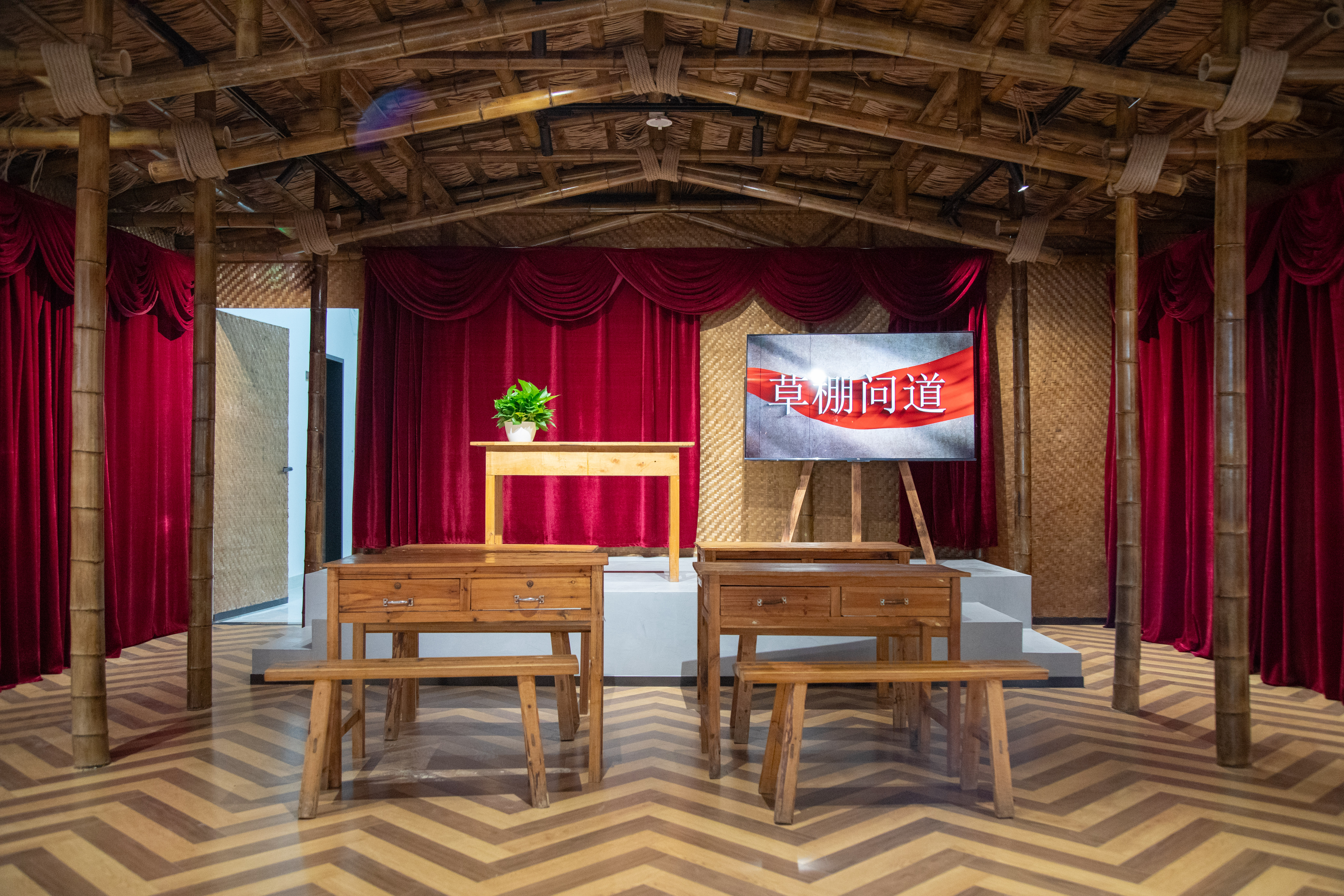
The straw hut witnesses SCNU's predecessors' perseverance in studying and teaching, thus forming "the spirit of straw huts".
Walking through the tunnel, the right side exhibits the accomplishments since 2012 and the plans of SCNU. SCNU has made fruitful results in ideology and moral teachings, discipline development, academic research, talent cultivation, social services, etc. As for the plans, SCNU has cleared the direction of the four-campus development and will strive for the goal of being a world-class university.

The futuristic tunnel connects the past and the present of SCNU.
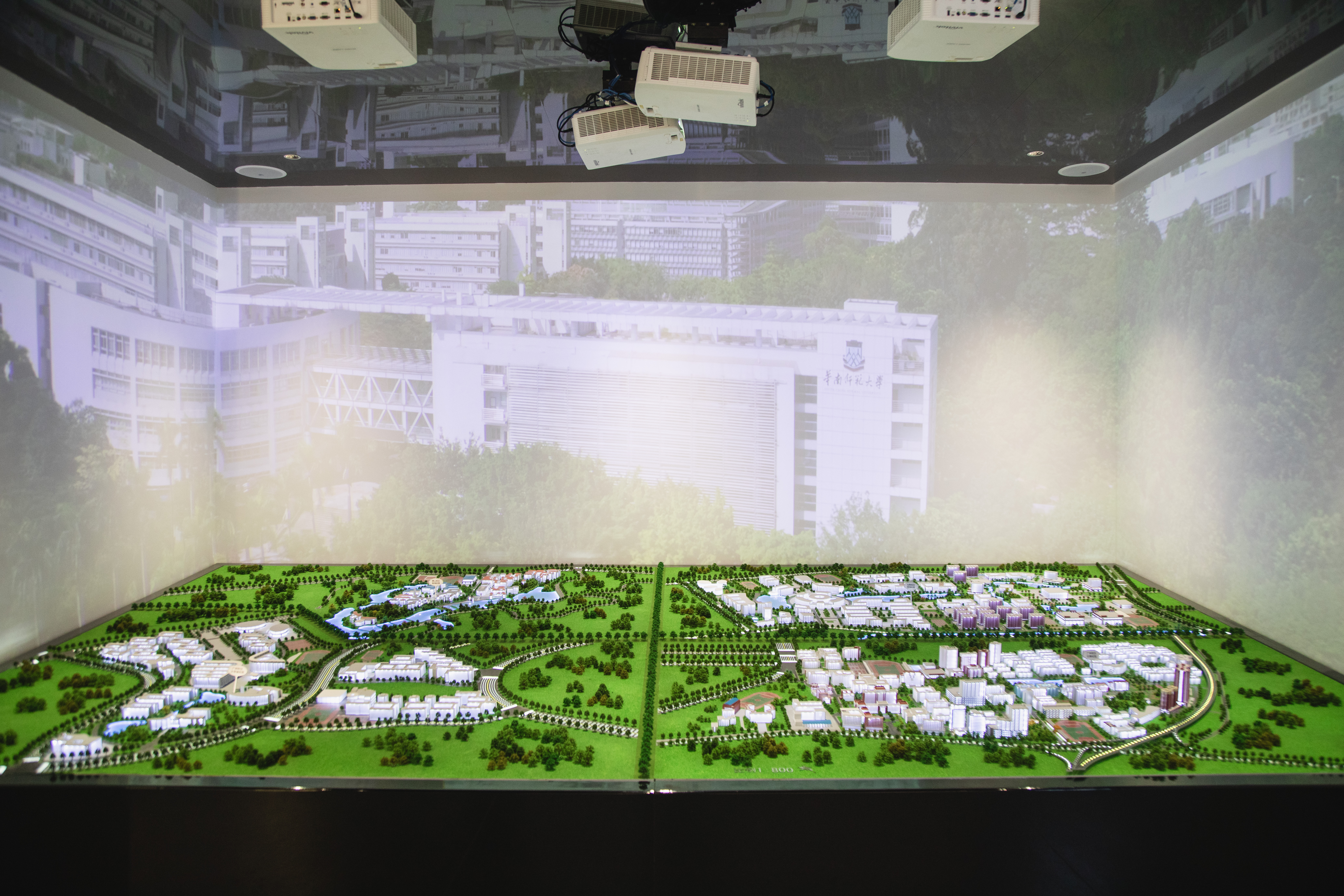
The sand table model of the four campuses.
The exhibition of cultural relics on the second floor was unveiled on November 5, in an area of about 500 square meters. SCNU has a collection of 375 antiques, about 100 of which are on display. The items include objects of shell mounds, animal fossils, jade wares, bronze wares, pottery, porcelain and other small objects, mainly provided by the School of History & Culture. Works of ancient literature collected by the SCNU Library, paintings and calligraphy works offered by the School of Chinese Language & Literature and the School of Fine Arts are also displayed.
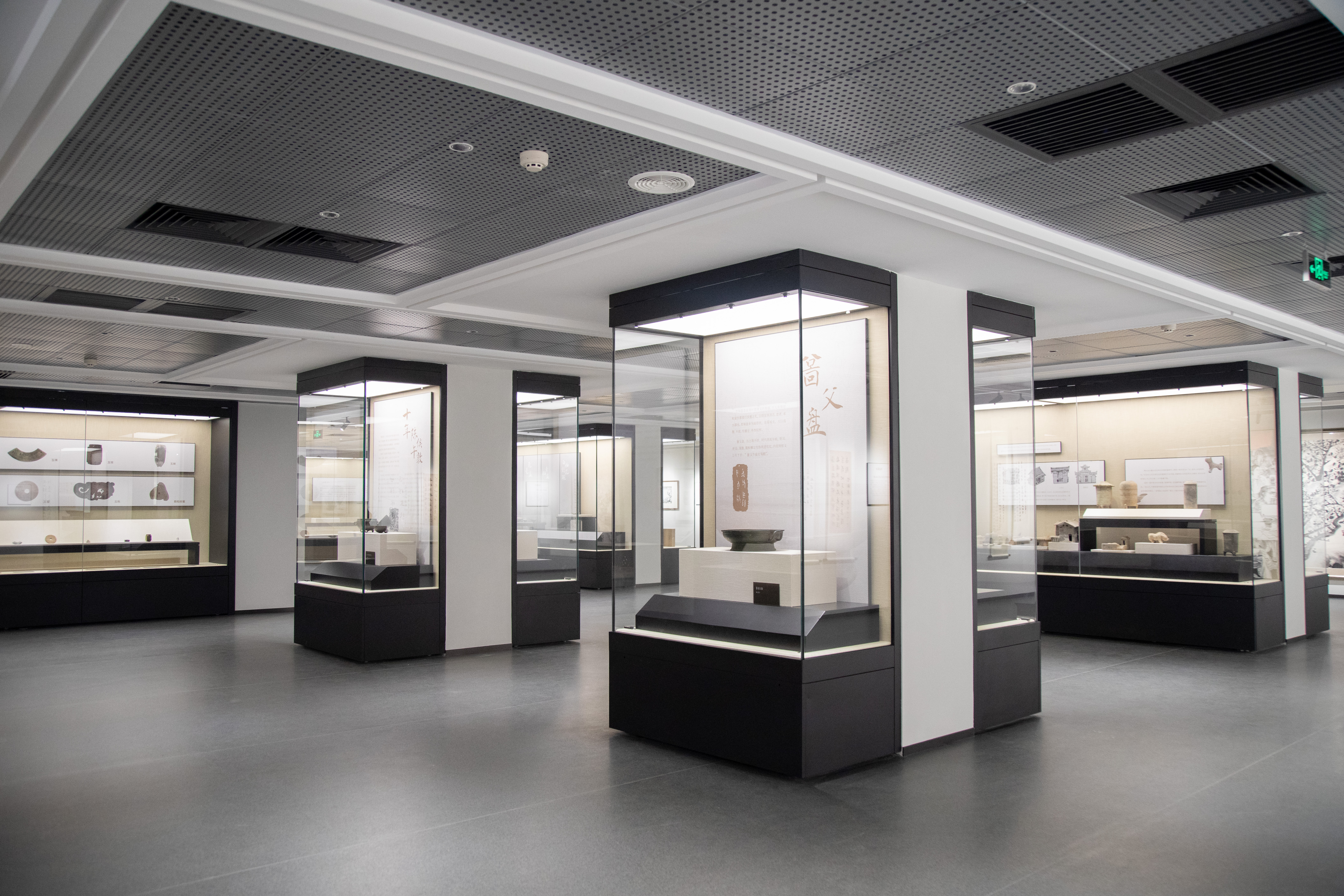
An indoor impression of the second floor of the school museum.
In the 1950s and 1960s, students and teachers of the School of History & Culture participated in the investigation and evacuation of the antiquities in Guangdong province. Some of the displayed objects were from that period, and others were purchased or donated. They all have high artistic and academic value, embodying the adherence to education intention and cultural inheritance.
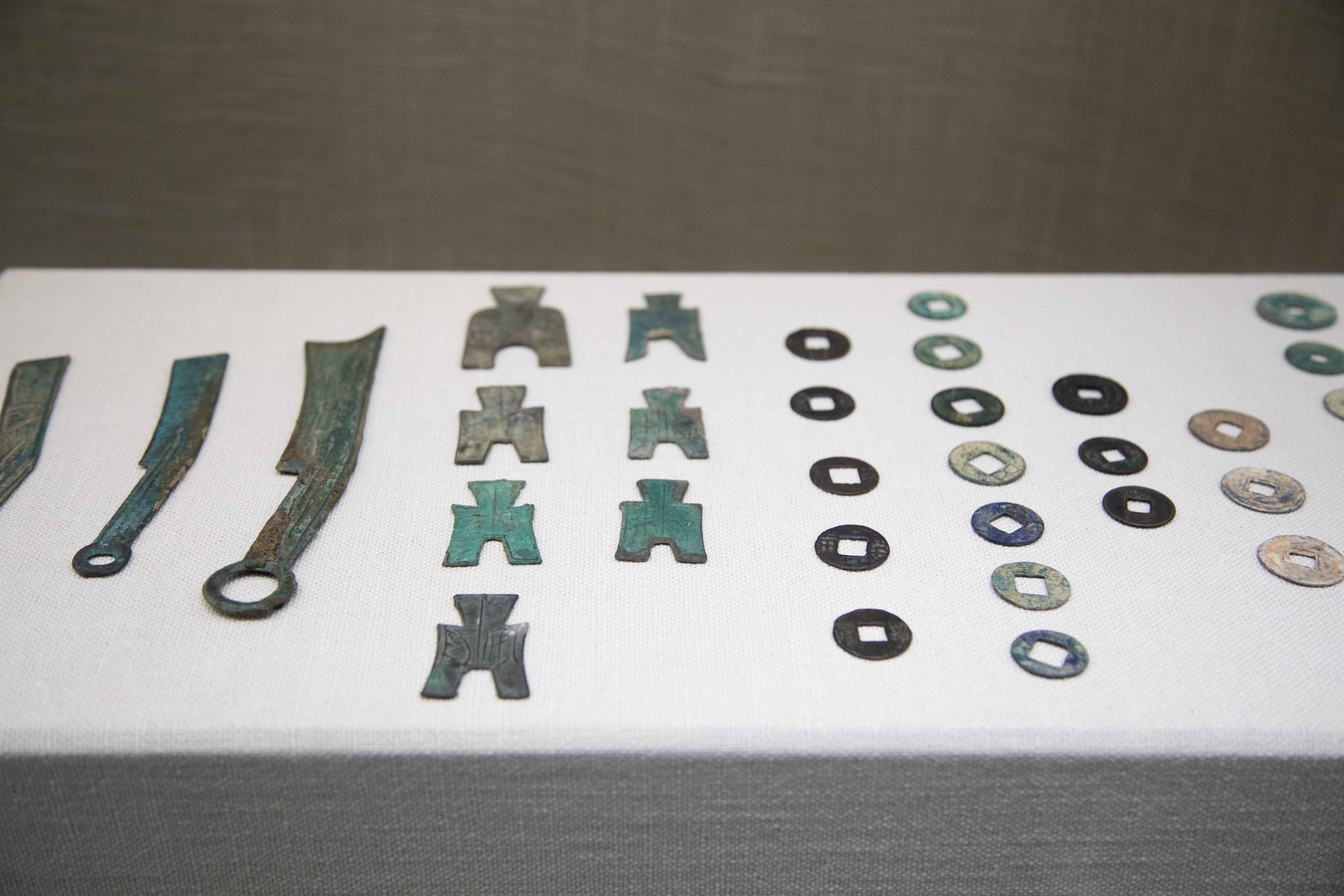
Items of ancient currency on display.
Ke Youliang, deputy leader of the museum preparation group and head of the SCNU Archives, pointed out that the construction of the school history museum aimed to commemorate predecessors, inspire heirs, inherit the spirit, and carry it forward into the new era. "The museum serves as a guide for the development of SCNU by showing its history, cultural traditions and achievements. The next step is to enhance the research of school history and enrich the exhibitions," he added.
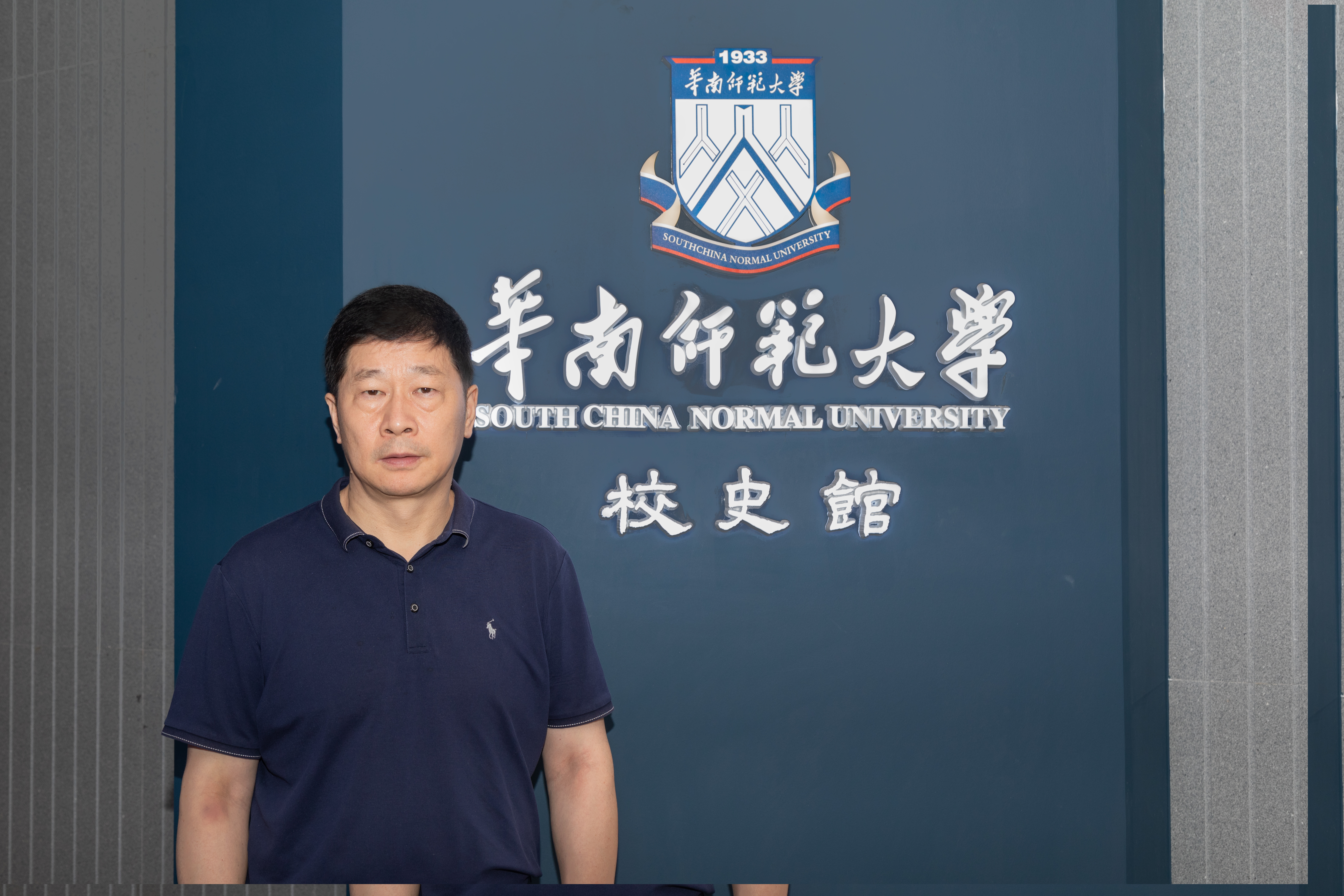
A photo of Ke Youliang.
Chen Xianbo, vice dean of the School of History & Culture, shared the construction process and the significance of the museum. He said that the collection of treasures not only belonged to the School of History & Culture and SCNU, but was also part of the wisdom of the Chinese people. "The opening of the school museum allows students to understand the importance of history and culture, and demonstrates SCNU's efforts of preserving and inheriting its cultural spirit."
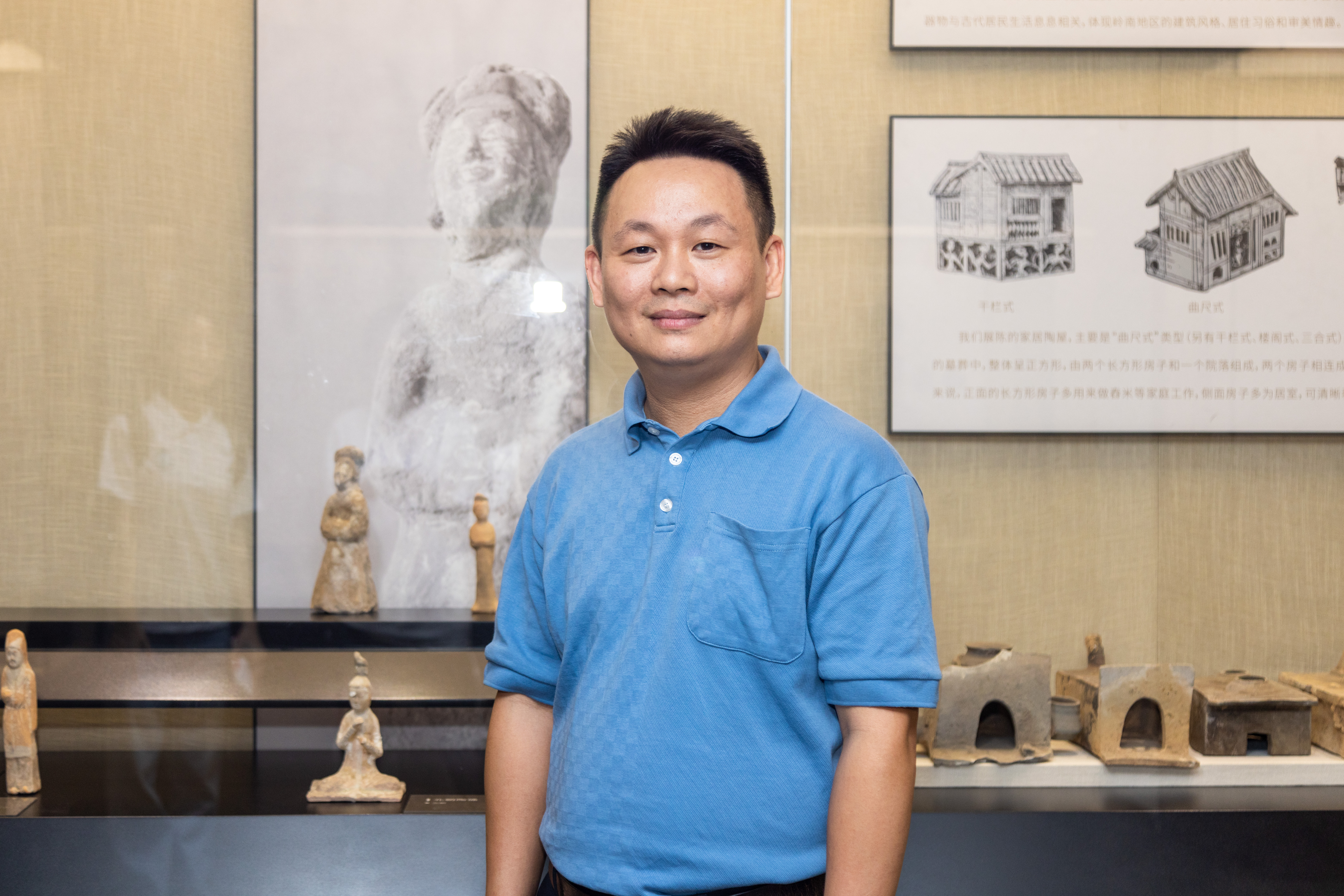
Chen Xianbo in front of a display cabinet.
To see a more detailed history of SCNU's development, please click here. Welcome to SCNU to visit the school history museum!
Source from SCNU News Center
Translated by Lin Yingtong, Zeng Wenting
Proofread by Edwin Baak
Edited by Wang Yingmin
What to read next:


